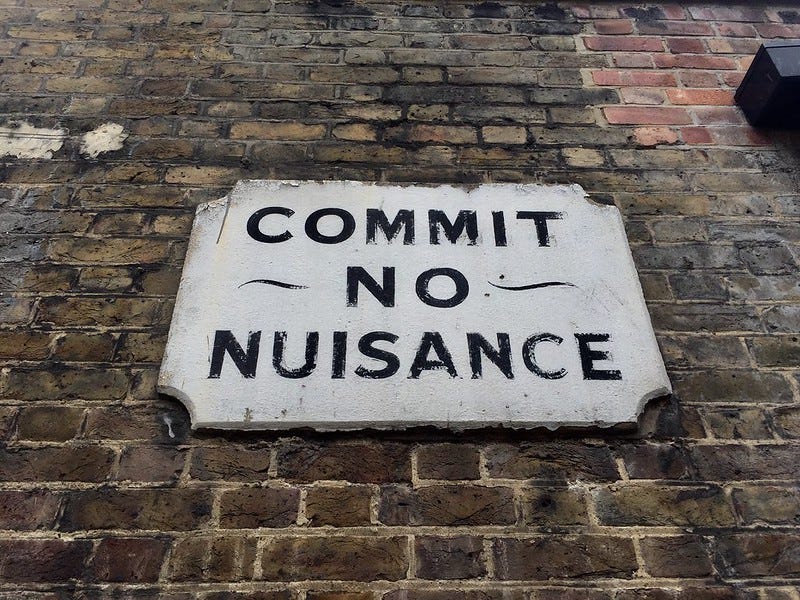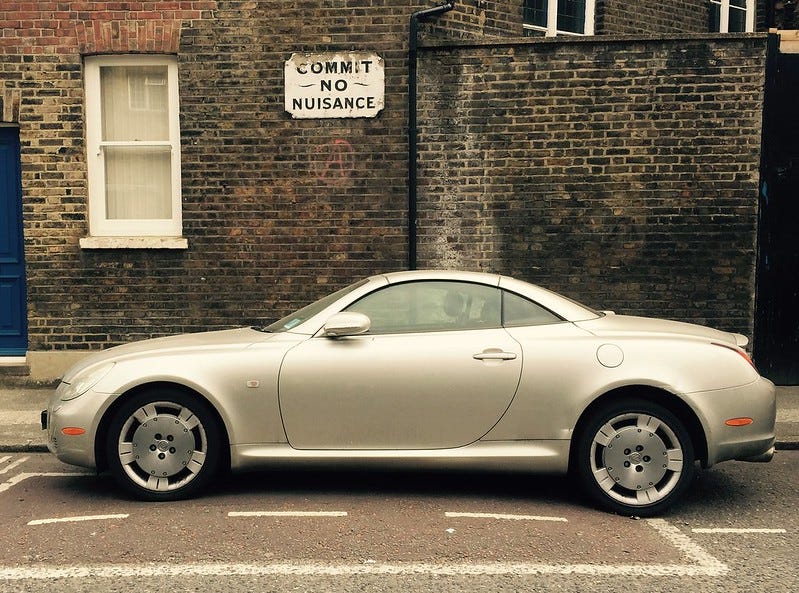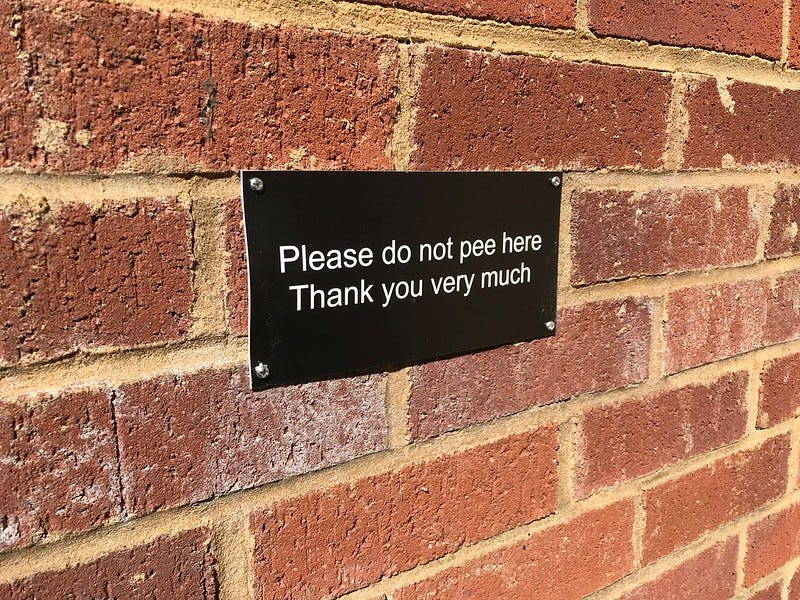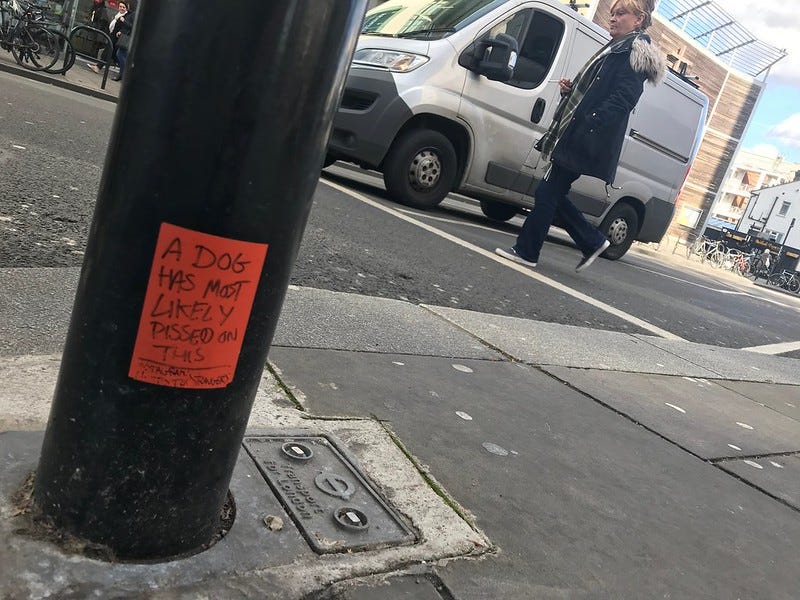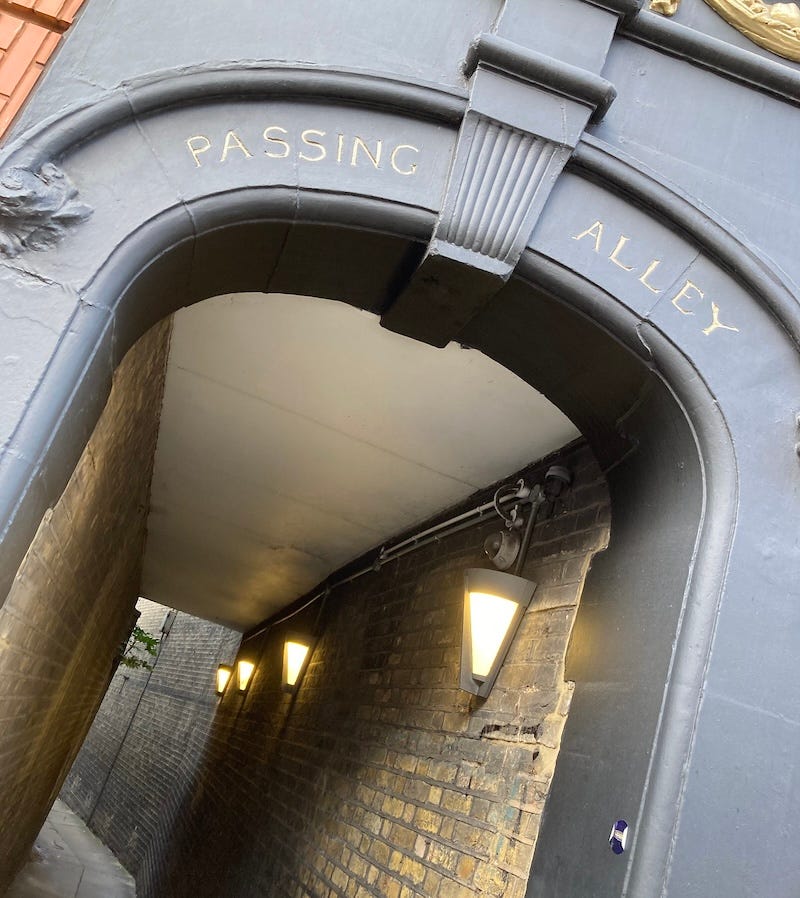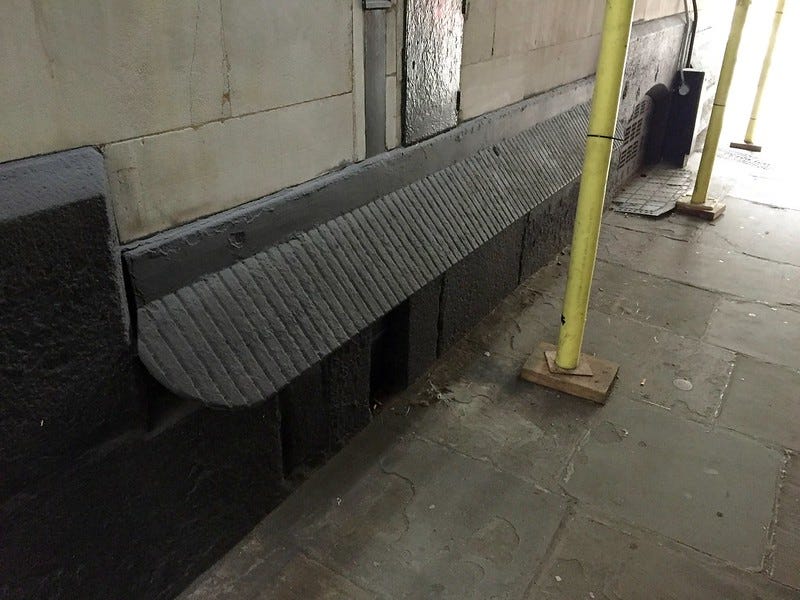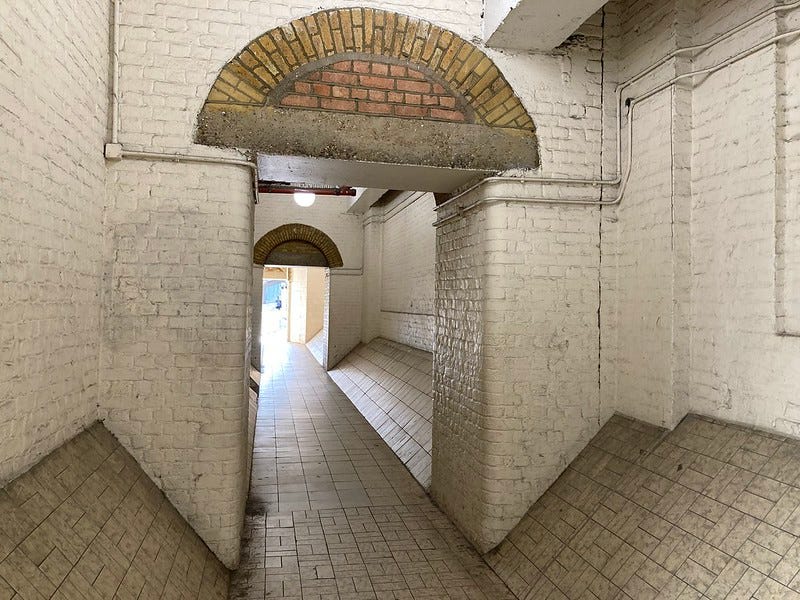Commit No Nuisance
The revolting history of street urination.
Welcome to your Friday newsletter for paying subscribers, with a generous teaser for everyone else.
I didn’t set out to write a whole newsletter about the history of peeing against walls. Honestly. My intention was to round up some favourite ghost signs and vintage hazard warnings. But, then, I pasted in the photo above, and the urination theme just trickled out. Bear with me in this, though, because the topic offers a golden pool of unexpectedly fascinating history.
First, a quick message and the History Radar.
📣📣 SITE VISIT: A big thank you to everyone who’s signed up for our group visit to the Thames River Police Museum in Wapping. We actually filled all the places within a couple of hours, and there’s a long waiting list. It’s proved so popular that I will try to arrange for a second visit soon, as a perk for paying subscribers. I’m also hoping to do another ‘drinks in an historic pub’ night in November, so watch this space.
History Radar
Upcoming events of interest to London history fans.
👨🏾🏫 BLACK HISTORY MONTH: October sees the return of Black History Month, with dozens of events taking place across the capital. The complete listings can be found here, featuring numerous walks, talks and performances.
🚶🏽♂️SPITALFIELDS: Short notice, but if you’re free on Saturday 28 Sept, then you could do a lot worse than get along to Dr Matthew Green’s new Spitalfields tour. His tours are more like productions, with actors and musicians popping up along the way to recreate characters from the area’s past. The walk ends with a silent tour of Denis Severs’ house.
💀 MONTH OF THE DEAD: As October gets underway, so does London Month of the Dead, a festival of events on the theme of death, spanning talks, tours, film screenings and more, often with a London historical twist. Highlights this week include a torchlit walk in West Norwood Cemetery, and a guided tour of Tower Hamlets Cemetery. Be quick though, as events tend to sell out in advance. Runs throughout October.
👨❤️👨 QUEER LIFE: What was life like for gay men in London in the middle of the 20th century? Peter Parker draws from letters, diaries, novels, plays, films, newspaper articles, parliamentary debates, medical journals and police reports to paint an impression of gay life between 1945 and 1967, in an event at the British Library on 1 October.
🖊️ LATE NIGHT KEATS: On 3 October, Hampstead's Keats House stays open late for an evening focusing on the women who once lived there, including the poet's sister Fanny Keats. It ties in with the current exhibition, Hidden Histories of Keats House, and includes a talk about the lives of ordinary women in Regency England, craft workshops and a pop-up bar.
🖼️ EAST LONDON GROUP: Ever heard of the East London Group? They were an historic group of artists, mainly from working-class backgrounds, who painted the streets of the East End. The Nunnery Gallery in Bow has a new exhibition of works by 22 painters from the Urban Contemporaries group, who were inspired by the East London Group. The exhibition, which runs from 4 October until Christmas, shows how the city has changed in the intervening years.
🗽PUBLIC ART: On the longer-range radar, I’ve been alerted to an upcoming conference on the past, present and future of public art. The meeting, called Public Art: Aesthetics in the Public Realm, looks at how statues, sculptures and the like can improve the public realm. It’s organised by the wonderful Heritage of London Trust, and the big-name speaker is Thomas Heatherwick. That’s at RIBA on 15 November.
Commit No Nuisance
What a commanding sign that is. We are left in no doubt as to the amount of nuisance we can commit. The authority behind it will brook not the slightest aliquot of nuisance. Not a pinch. Not a punch. Not a cuss word or lewd gesture. Precisely NO NUISANCE will be tolerated here.
The sign is intended to discourage one nuisance above all others. Urination. The “committing of nuisance” was a well-known euphemism for wild toileting from at least the 1790s (the earliest reference I can find). Signs like the one shown above must have been commonplace by 1826, when a sketch in the Weekly Times (£) has a Frenchman mistaking a “Commit No Nuisance” board for a street name.
We don’t make signs like that anymore, do we? This is the modern way:
Some historical accounts of men peeing against walls
The great surge in public peeing — the golden age, shall we say? — came in the early-to-mid-19th century. This was a time of rapidly growing population, and rapid urban expansion. Many more people worked outdoors, hawking goods, sweeping crossings, running errands, labouring. Very few public toilets catered for their needs. A crafty tinkle in the corner was the only option.
An 1843 book, Suggestions for the Improvements of our Towns and Houses, by TJ Maslen, offers some eye-opening insights into the prevalence.
“The indelicacy of men watering against the walls of houses in public thoroughfares is not only distressing to such of them as possess any feeling of modesty but is productive of pain and confusion to all well bred females who throng the streets and cannot avoid such rencontres in every direction. Sometimes there may be seen a rank of men say eight or ten gentlemen and labourers all in a row, “pumping ship” against boards and palings which surround buildings under repair, and frequently in such conspicuous situations and public thoroughfares that really it is almost impossible for wives and daughters to go past the place”
The campaign starts here to revive the phrase “pumping ship” for an act of urination.
Another report from 1823 suggests a contender for London’s longest nuisance-free wall.
“The walls of the Park, particularly that long wall which extends from Hyde-Park to Knightsbridge, presents a curious appearance, and attracts much attention from the “Notices” that appear on such walls… in letters three feet each in height!… Commit no nuisance! Those notices follow one another and occupy such an extent of the wall on account of the largeness of the letters and the width at which they are placed that they reach nearly to the iron gate facing the Knightsbridge Foot Barracks.”
It’s easy enough to find accounts of men being fined for publicly heeding the call of nature. Mundane stuff. But I also stumbled across an 1820 case where someone took nuisance-committing to the level of extreme sport. The scene of the crime is Bell Alley, Whitecross Street (today a thriving street food market).
“The defendant, to save the expense of nightmen… dug a hole in the alley, and at night took a brick from a privy, when the soil ran, filled the hole, and flowing over, ran into a neighbouring house, and covered the floor of an apartment in which the occupant lay sick.”
If you were planning on writing a gross-out movie set in Georgian London, then there’s your opening scene right there. In case you’re wondering, the poo-syphoning defendant, a Mr J Cart, was fined five pounds for his feculent sludge-wheeze.
Something must be done…
For a long time, “Commit No Nuisance” notices were the only measure against public urination. Anybody caught doing the deed within the vicinity of such a warning stood liable to a fine. By implication, a wee anywhere else was tolerated. But finding a spot to relieve oneself was not always easy.
The Victorians had other interventions up their sleeves (or trouser legs). Maslen’s book, quoted above, also comments on the preponderance of spikes and other measures to prevent liquid contributions to the streetscape. Another option was to place sloping boards low down on walls, so that an incoming stream would ricochet back onto the perpetrator’s legs. Such urine deflectors — also known as wazzbaffles1 — can still be found around town today.
It’s easy enough to find other examples. Another well-known urine deflector can be seen to the rear of the Bank of England on Lothbury. (Ironic, as the Bank usually welcomes gold deposits). Meanwhile, what I reckon to be London’s longest wazzbaffles can be found inside that raised walkway that runs along the top of Charing Cross station towards Hungerford Bridge.



